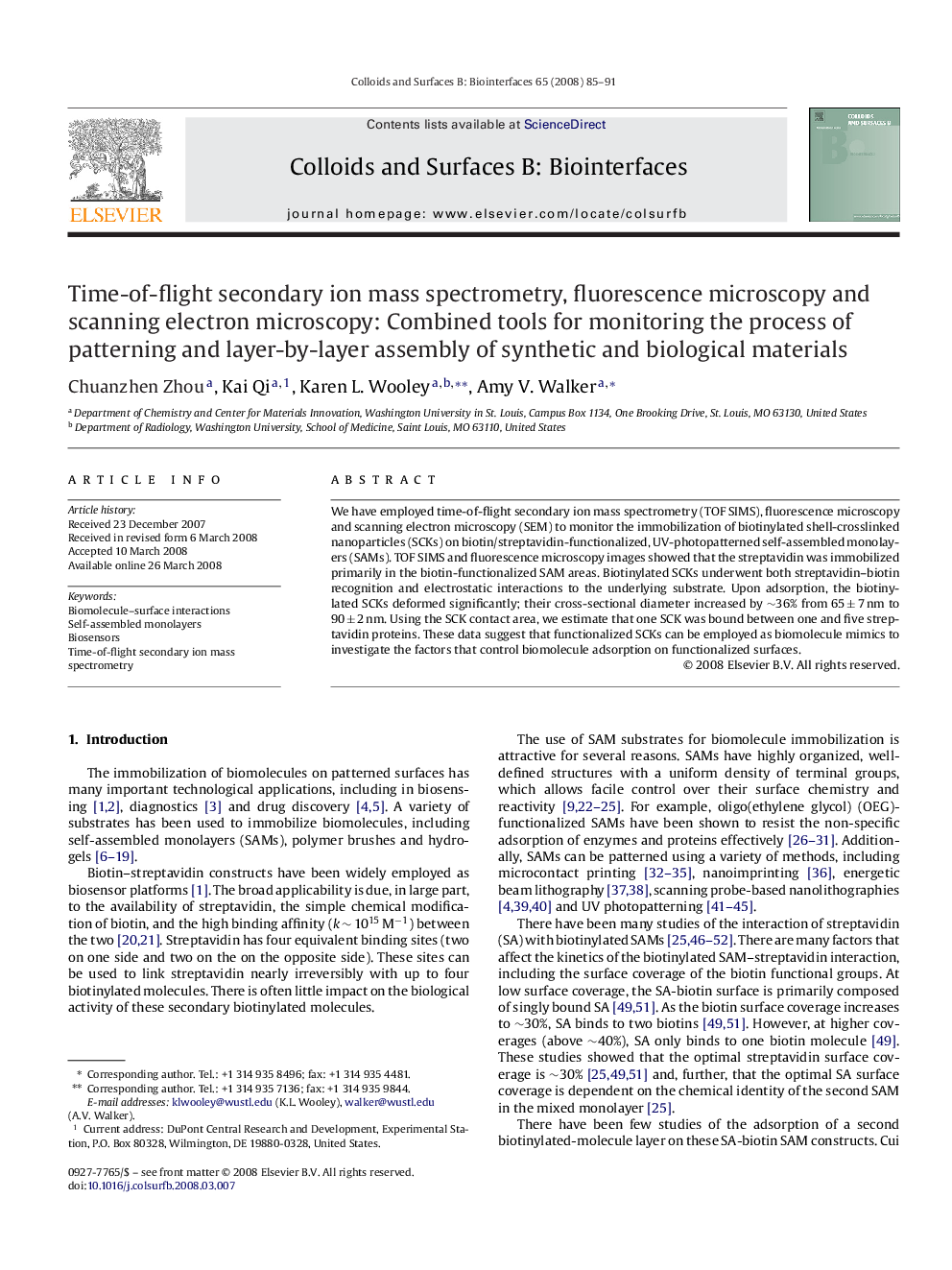| کد مقاله | کد نشریه | سال انتشار | مقاله انگلیسی | نسخه تمام متن |
|---|---|---|---|---|
| 602820 | 879995 | 2008 | 7 صفحه PDF | دانلود رایگان |

We have employed time-of-flight secondary ion mass spectrometry (TOF SIMS), fluorescence microscopy and scanning electron microscopy (SEM) to monitor the immobilization of biotinylated shell-crosslinked nanoparticles (SCKs) on biotin/streptavidin-functionalized, UV-photopatterned self-assembled monolayers (SAMs). TOF SIMS and fluorescence microscopy images showed that the streptavidin was immobilized primarily in the biotin-functionalized SAM areas. Biotinylated SCKs underwent both streptavidin–biotin recognition and electrostatic interactions to the underlying substrate. Upon adsorption, the biotinylated SCKs deformed significantly; their cross-sectional diameter increased by ∼36% from 65 ± 7 nm to 90 ± 2 nm. Using the SCK contact area, we estimate that one SCK was bound between one and five streptavidin proteins. These data suggest that functionalized SCKs can be employed as biomolecule mimics to investigate the factors that control biomolecule adsorption on functionalized surfaces.
Journal: Colloids and Surfaces B: Biointerfaces - Volume 65, Issue 1, 1 August 2008, Pages 85–91